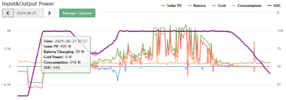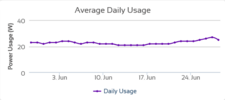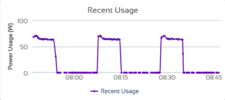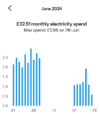The tumble dryer uses energy in two ways, one to dry the air and the other to tumble the clothes. There must be a point where using less energy to dry is counted out by using more energy to tumble.
However, cooling the air to remove the moisture one would think would work better than simply using fresh air all the time, but it would depend on how dry that fresh air was.
In my case, the fresh air was being drawn from outside rather than from the house, so the humidity of the air in the dryer was likely lower than the humidity of the air in most homes, so in my case the vented dryer was working in near ideal conditions, where in many homes we need to consider that it is taking central heated air and super heating it, and throwing it away outside, so my obversions may not be reflected in other homes.
As said the vented dryer had no humidity sensor, it was put on for 90 minutes, and if clothes not dry, put on a second time, in the main they were dry, but it means one can't be sure if dried to same level.
Also, I have noted with some loads the heat pump dryer uses a mark/space ratio, and the heat pump is not running all the time the clothes are being tumbled.
However, in general, the heat pump dryer takes 150 minutes at 650 watt, and the vented took 90 minutes at 1020 watt, so the power saved is not that much, if any, but using the heat pump dryer has allowed the window to be closed, and although the utility room was not heated, it has got warmer with the window closed, and so has the kitchen, and the black mould on the walls has gone. So all in all, the heat pump dryer is doing a better job, but not to the level one was led to believe it would.
And since now in the main using the sun to dry the clothes, as tend to use the dryer when solar panels are exporting, running costs have reduced, the problem is to get it running early enough so it has completed before the solar production has started to reduce, so it is using power from the battery, so latter that evening we are using grid power earlier.
I only have a 3.2 kWh battery, this time of year that is enough to ensure still 10% left at 1 am when battery set to recharge, Also I often stop importing at 5 am and likely I could stop earlier and still the solar in morning will take over before I hit again the 10% this

from yesterday shows the three dips in the battery state, one before 1 am, one around 7:30 am, and finally one at end of day, my wife had dishwasher, washing machine and tumble dryer on during the off-peak, and the tumble dryer had not completed when off-peak finished, So it was running off the battery until the solar took over. And solar production was not that high anyway.Go back to day before,

and the morning dip was far less, and this is the problem with off-peak and solar, instead of it making life better, we become slaves to the sun and off-peak times, I suppose we become sun worshippers, watching the weather like a sailor!
If we could automate when the three main appliances turned on, it would be better, a signal from smart meter to say exporting, like we got to switch on economy seven storage heaters. But it seems we are going backwards, there is no signal from the smart meter we can use, And the phone app is a day behind. In other words, the smart meter is now dumb, compared with the old white meter.
The same applies to many other devices, we can see how we should be able to automate, but as it stands, we need a human to read the info, and use it, I can at my PC see the room temperatures sent to me by the TRV heads, and I can turn on my boiler if the rooms are too cool, but I have to manually do this, I clearly made a mistake getting Nest Gen 3, had I got Drayton Wiser it could have been automated, but there is no integration between makes of smart devices other than Google Nest Mini's and Alexa. And that required voice control, and the Nest Mini can behave like a mischievous little boy at times, I have said living room main with a little too much gap between living room and main.
Instead of the automation devices serving us humans, us humans seem to be serving the automation devices. When I bought this house I noted the bus goes past the door, but it doesn't due it seems to parked cars, there is no where safe to leave my bike at the bus stop, so I go to the station instead where my bike is safe, everyone knows me, So last Friday went to Welshpool in evening for a drink, not by bus, using an internal combustion engine, but by train using an external combustion engine (steam) one as somewhere to park bike, and two there was no bus into Welshpool at 6:30 pm and back at 10:30 pm, train was the only option, and since the beer festival was at Welshpool heritage train station, suited me anyway. But when a volunteer run heritage train gives a better service to the bus, one has to ask what has gone wrong?








